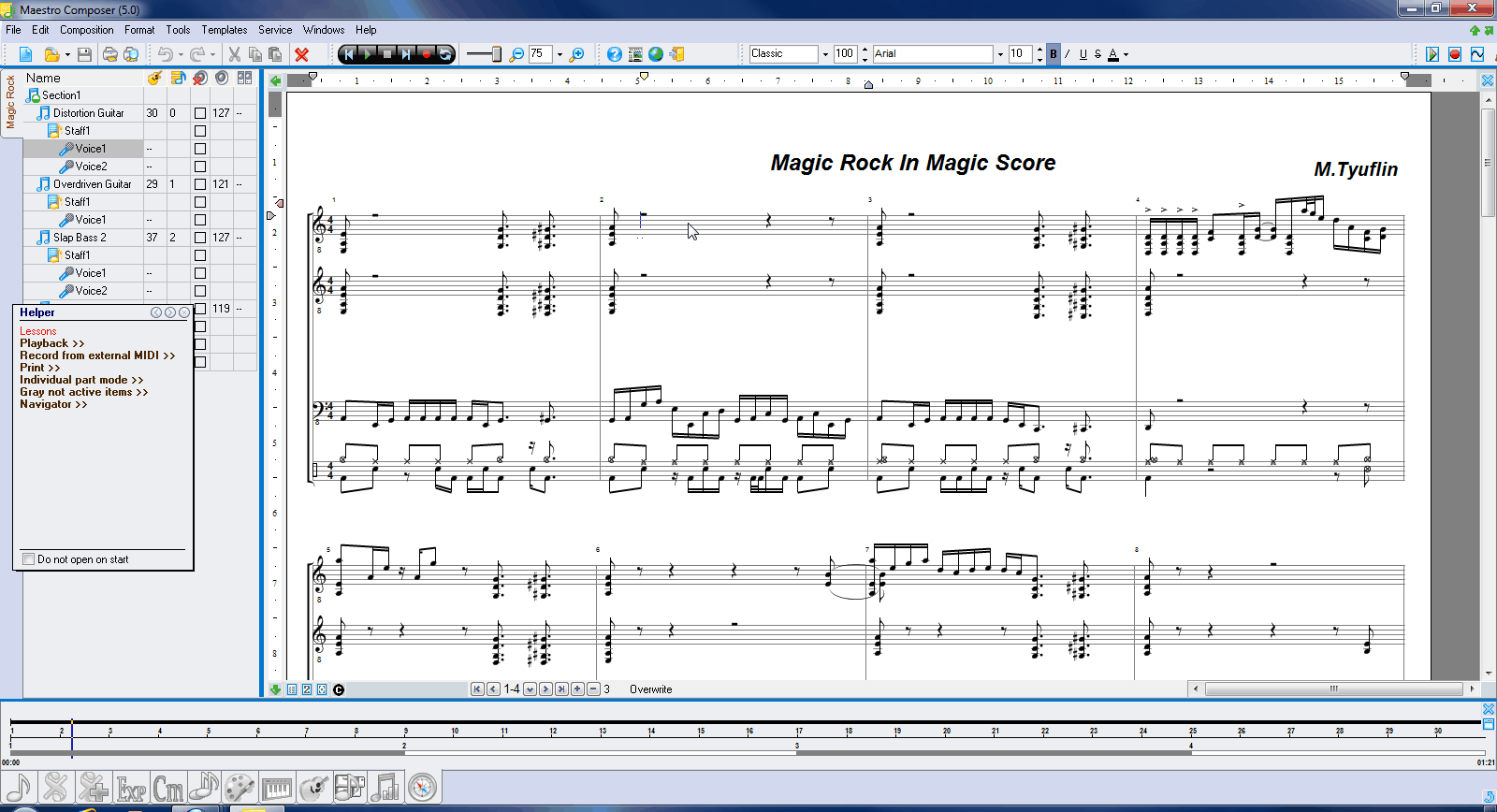Although Maestro Composer may not be one of the most well known music notation programs on the market it has many positive features in its corner that make it worth taking a closer look. Some of the things like very simple entry of notes and quick access to almost any marking that a composer might want or need to use are just some of the basic things that get you started. Other bonuses like a very intuitive help system and multiple ways to import, export, and publish the music you write are icing on the cake when you notice the program's fairly low price tag. So what are the pros and cons of Maestro Composer and who is it best suited to be used by? Let's take a closer look.
Main Features of Maestro Composer
The basic features of Maestro Composer are very much on par with the more expensive music notation systems like Sibelius and Finale. The music can be customized in almost every way a writer could want, from arranging the staves to making customized markings and dynamics. Scores can have an unlimited number of instruments, and the included Chorium sound fonts are very realistic and far better than the boring old general MIDI sounds that come with most PC's.
One of the features that the authors of Maestro Composer are very proud of is the many different ways that a user can enter notes into the system. Depending on what I was working on I could choose from standard mouse and keyboard entry, MIDI based real time entry, step time entry, or entering notes by clicking on an on screen guitar fretboard or piano keyboard. Realistically though, while having the other options available is quite handy, most users will probably stick to the standard mouse based or MIDI entry options.
One of the most useful features for me was the contextual on screen help system that guides a user through the different phases of creating a new piece of music. The system noticed what I was doing and added a small window of tips and suggestions to push me along through the composing process. This is incredibly helpful to save a user from having to dig through dozens of menus looking for just the right command or dialog. When clicking on the suggestions some of the entries will have a DEMO button included which, when pressed, takes control of the mouse cursor and moves it around the screen to visually show you what to do to accomplish the task.
Printouts of scores made with Maestro Composer are clean and easy to read. In addition to the standard paper printing options there are several other output options as well. Exporting to MusicXML, MIDI, and Karaoke formats are standard these days, but Maestro Composer also offers the ability to quickly save the entire composition as an MP3 or WAV file.
Overall the features and capabilities of Maestro Composer are well worth taking a look at (they offer a free demo version) if you are in the market for a new music notation software program and don't want to fiddle with the complexities of the bigger names in the category. The help system alone makes the product a viable alternative and both beginning musicians and accomplished writers should consider checking it out.
Disclosure notice: The author of this review has had a previous professional relationship with the authors of the Maestro Composer software in which he was compensated for services rendered. However, no payments of any kind were received by the author in regard to this review.

